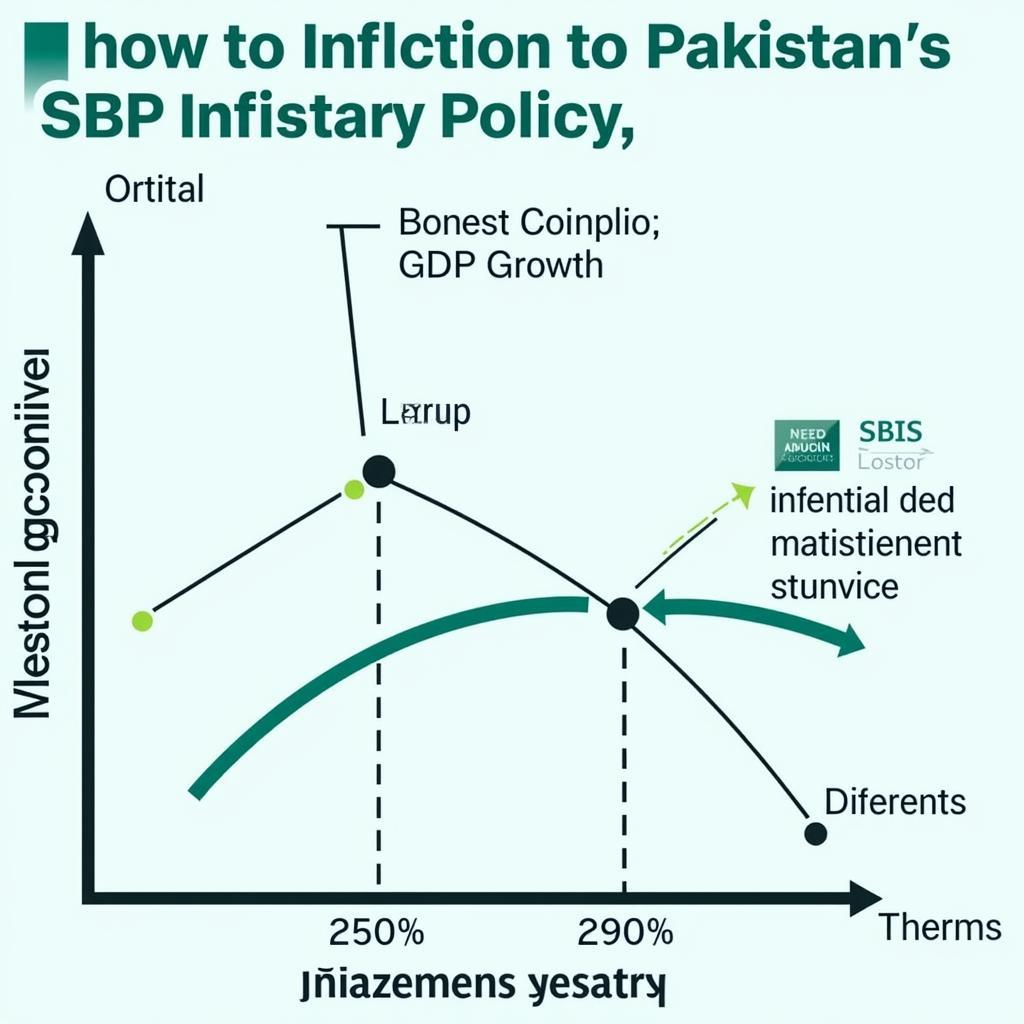Monetary policy in Pakistan is a complex and dynamic subject. This Assignment On Monetary Policy Of Pakistan will explore the State Bank of Pakistan’s (SBP) role in managing inflation, promoting economic growth, and maintaining financial stability. We will delve into the tools and mechanisms used, the challenges faced, and the impact on the Pakistani economy.
Understanding the Objectives of Pakistan’s Monetary Policy
The SBP’s primary objective is to maintain price stability. This means controlling inflation within a target range to protect the purchasing power of the Pakistani Rupee. Alongside this, the SBP also aims to support sustainable economic growth and maintain a stable financial system. Balancing these sometimes conflicting objectives requires careful management and adaptation to changing economic conditions.
How Does the SBP Achieve its Objectives?
The SBP employs several tools to implement monetary policy. The most prominent is the policy interest rate, also known as the discount rate. This rate influences other interest rates in the economy, affecting borrowing costs for businesses and consumers. By adjusting the policy rate, the SBP can either stimulate or cool down economic activity. Other tools include reserve requirements, open market operations, and exchange rate management.
Challenges and Considerations for Monetary Policy in Pakistan
Pakistan faces several economic challenges that complicate monetary policy formulation. High inflation, volatile exchange rates, and a large informal economy are just a few of the factors that the SBP must consider. External shocks, such as global economic downturns or fluctuations in commodity prices, can also significantly impact Pakistan’s economic stability and require swift policy responses. Moreover, fiscal policy decisions by the government can interact with monetary policy, requiring coordination between the SBP and the Ministry of Finance.
The Impact of Global Economic Conditions
Global economic events can have a profound impact on Pakistan’s monetary policy. For instance, a rise in international interest rates can put pressure on the SBP to raise its own policy rate to maintain exchange rate stability and prevent capital flight. Similarly, global recessions can reduce demand for Pakistani exports, necessitating monetary easing to stimulate domestic demand.
Recent Developments and Future Outlook
Recent monetary policy decisions in Pakistan have focused on tackling high inflation. The SBP has raised the policy interest rate multiple times to curb inflationary pressures. The effectiveness of these measures is continuously evaluated, and adjustments are made as needed. Looking ahead, the SBP will likely continue to prioritize price stability while also supporting economic growth and financial stability. This delicate balancing act will require careful monitoring of economic indicators and proactive policy adjustments.
Expert Insights on Pakistan’s Monetary Policy
Dr. Ayesha Khan, a leading economist specializing in South Asian economies, notes, “Pakistan’s monetary policy faces the ongoing challenge of managing inflation amidst a volatile global landscape. The SBP’s commitment to price stability is crucial for long-term economic growth.”
Mr. Imran Ali, a former advisor to the SBP, adds, “Effective monetary policy requires careful coordination with fiscal policy. A unified approach between the SBP and the Ministry of Finance is essential for achieving sustainable economic development.”
 Future Outlook of Pakistan's Monetary Policy
Future Outlook of Pakistan's Monetary Policy
Conclusion
This assignment on monetary policy of Pakistan has explored the complexities and challenges faced by the SBP in managing the country’s economy. From controlling inflation to promoting economic growth, the SBP plays a vital role in shaping Pakistan’s financial landscape. The ongoing challenges require continuous adaptation and proactive policy adjustments.
FAQ
- What is the main objective of Pakistan’s monetary policy? (Price stability)
- What is the policy interest rate? (The rate at which the central bank lends to commercial banks)
- How does monetary policy affect inflation? (By influencing interest rates and money supply)
- What are some of the challenges faced by Pakistan’s monetary policy? (High inflation, volatile exchange rates, large informal economy)
- How does global economic conditions impact Pakistan’s monetary policy? (Through capital flows, trade, and commodity prices)
- What are some recent developments in Pakistan’s monetary policy? (Raising policy interest rates to combat inflation)
- What is the future outlook for Pakistan’s monetary policy? (Continued focus on price stability while supporting growth)
Common Scenarios and Questions
- Scenario: High inflation and weakening currency. Question: What steps can the SBP take to stabilize the economy?
- Scenario: Slow economic growth and high unemployment. Question: How can monetary policy stimulate economic activity?
Further Exploration
Explore other related articles on our website about Pakistan’s economy, fiscal policy, and financial markets.
Contact Us
For assistance, please contact us: Phone: +923337849799, Email: news.pakit@gmail.com, or visit us at: Dera Ghazi Khan Rd, Rakhni, Barkhan, Balochistan, Pakistan. We have a 24/7 customer service team.